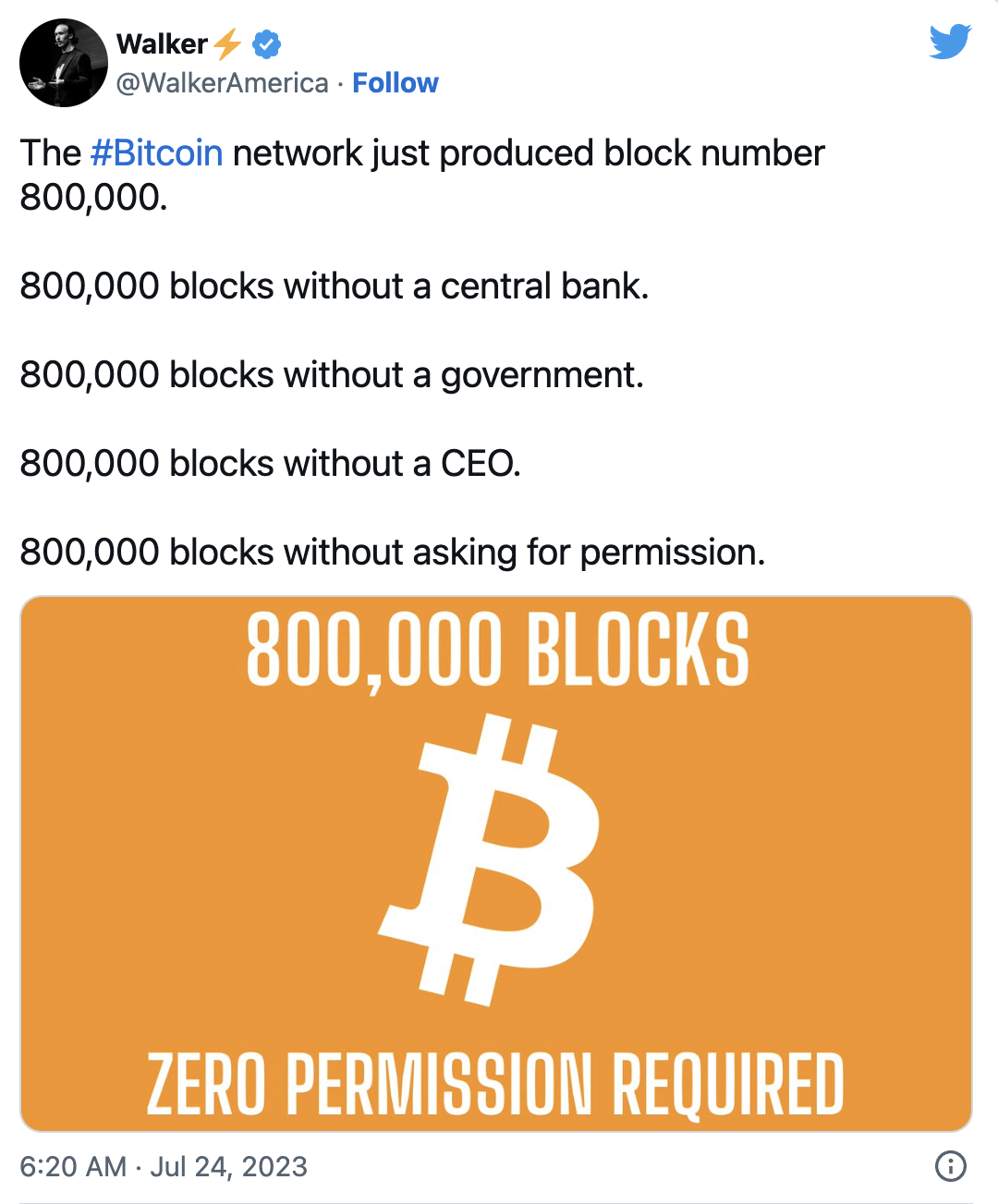Bitcoin, reaching a milestone on its network, has successfully mined its 800,000th block. Only 40,000 blocks remain to be mined before the next reward halving. While the price of BTC hovers around $29,702, Bitcoin surpassed the 800,000th block on July 24th. This block, which contained 3,721 transactions in 1.64 megabytes, continues to be shared on social media as a turning point for the Bitcoin network among investors and cryptocurrency experts.
Block Height: The Significance and Security Principle of the Bitcoin Blockchain
The block height of Bitcoin refers to the position of a block in the blockchain based on the number of blocks preceding it, starting from the genesis block, which is the founding block of the network. Blocks contain transactions and data packaged by network miners.
This metric moves as a chronological sequence of transactions and blocks in the network, based on its connection to the previous block in the blockchain. Thus, it allows users to determine the order in which their transactions are recorded. Crypto Traders Are Rushing to This App – Here’s Why You Should Too

The block height of Bitcoin also serves as a measure of the immutability of the blockchain. The more blocks added to the chain, the more computational power a malicious user would need to tamper with previous blocks. An example of this is the 50% attack, which aims to create new blocks and monopolize the blocks. However, the metrics required to accomplish this make it difficult to obtain sufficient computational power with each new block, thereby strengthening the security of Bitcoin with each block.
Network Balance and Reward Adjustment
Block height serves as a measure used to maintain the mining difficulty of Bitcoin. The mining difficulty of proof-of-work based blockchain networks is periodically adjusted based on the total computational power of the network and the time it takes to mine a certain number of previous blocks.

Bitcoin generates a new block approximately every 10 minutes. If more hash power is added to the network, it affects this metric and automatically adjusts the mining difficulty every two weeks to maintain balance.
The amount of Bitcoin given to miners for adding a new block to the network is also determined by the block height. Bitcoin is designed to undergo a halving event every four years or after 210,000 blocks have been added to the chain.


 Türkçe
Türkçe Español
Español









